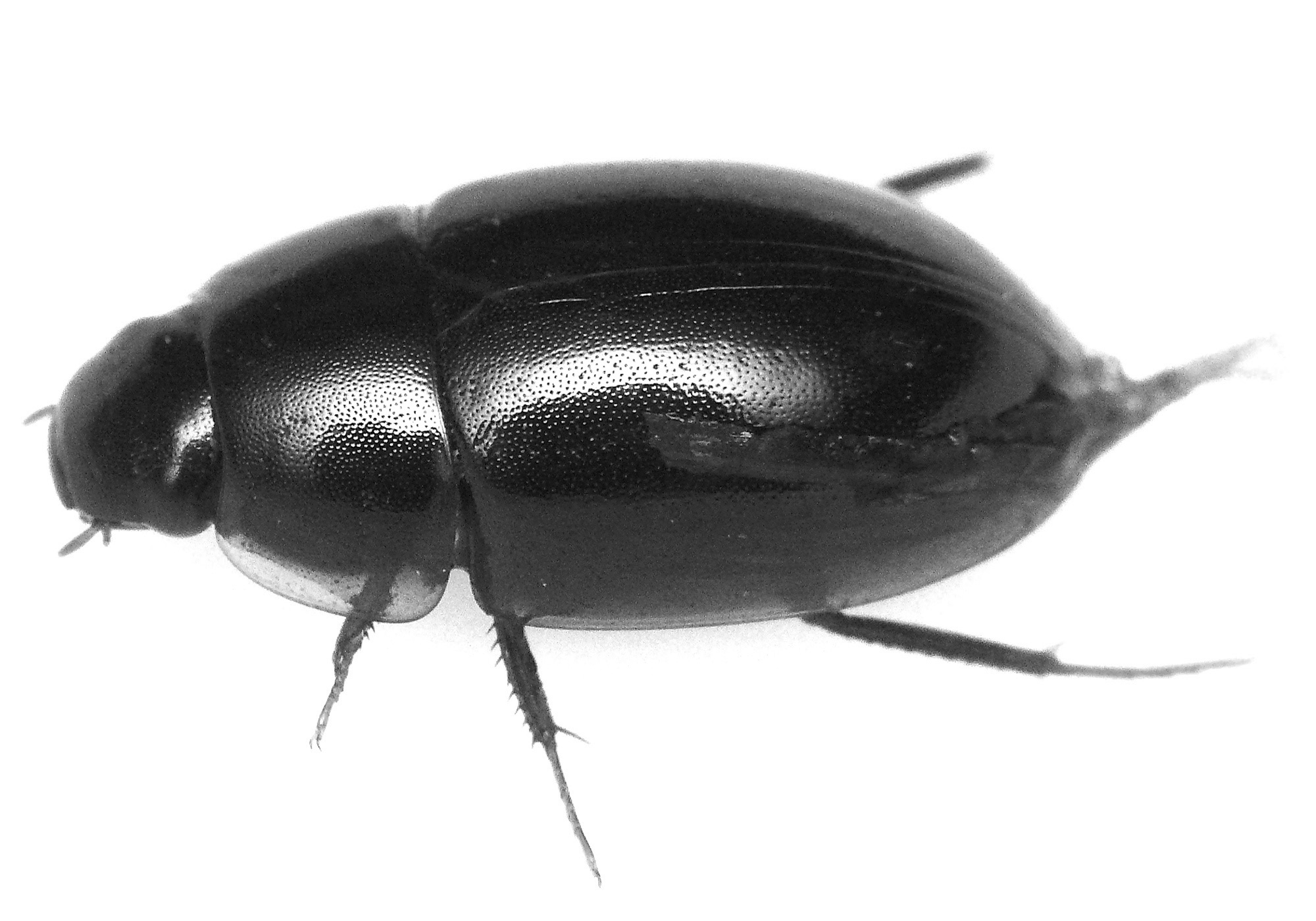An aquatic beetle which lives in paddy fields is capable of escaping a frog’s digestive tract after being eaten whole by fleeing out of its anus in under two hours.
The study, published in the peer-reviewed scientific journal ‘Current Biology’, was carried out by researcher Shinji Sugiura of Kobe University in the city of Kobe in the southern Japanese prefecture of Hyogo.
Sugiura, associate professor in Ecology at the university’s Graduate School of Agricultural Science, researched the escape behaviour of insects to prevent them from being eaten by other animals.
Some insects are able to flee through the mouth of its predator while others escape through its anus.
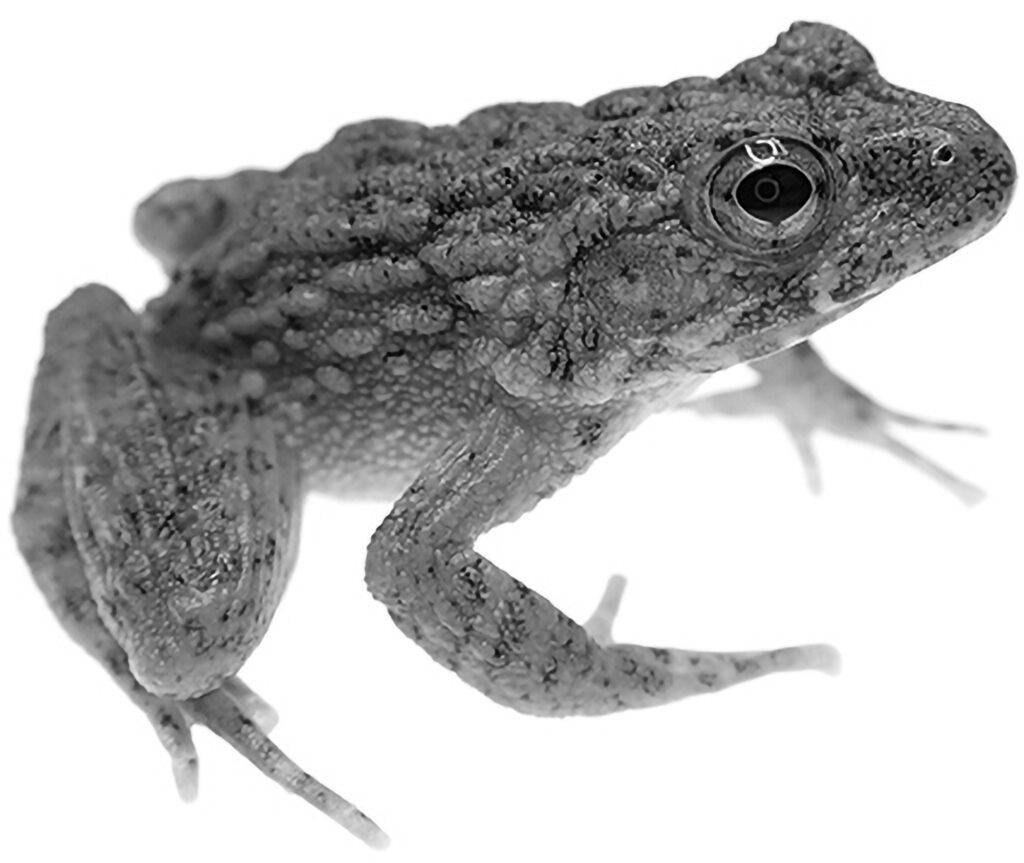
Glandirana rugosa 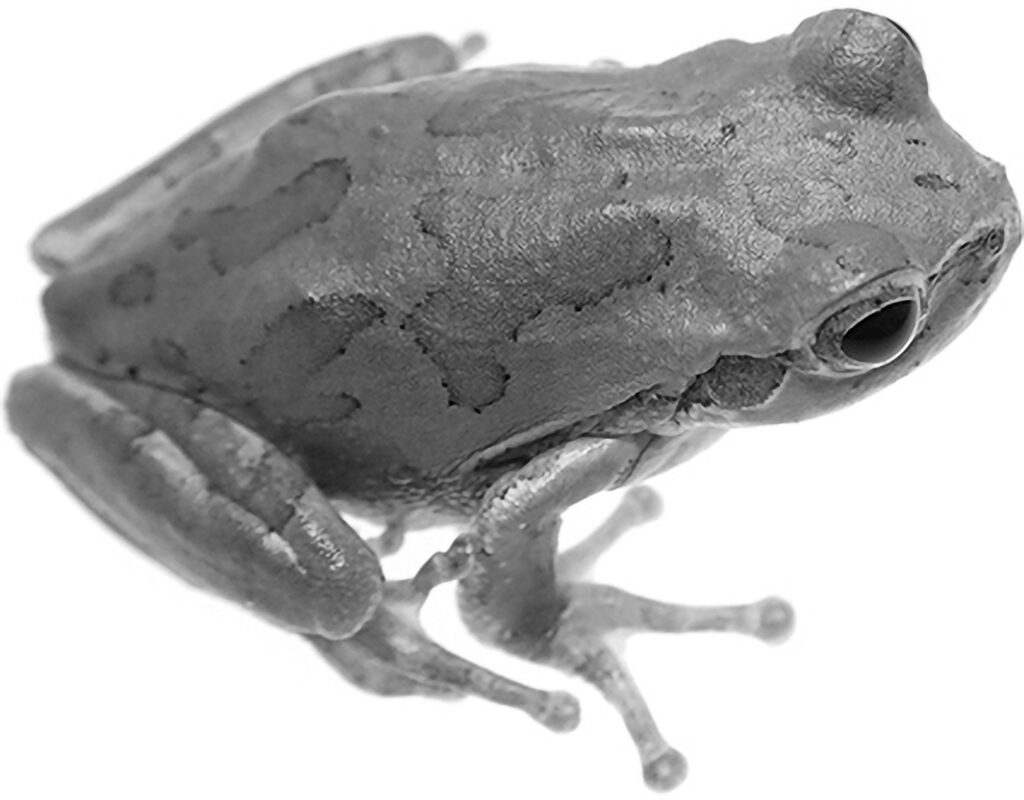
Hyla japonica
Those able to flee a predator through its backside have to endure long periods of time in the animal’s digestive tract and it is unclear how they manage it.
Sugiura fed various insects to a Pelophylax nigromaculatus, a toothless frog that swallows its prey whole.
He fed 15 Regimbartia attenuate, a beetle commonly found in paddy fields that measures around 5 millimetres (0.2 inches) in length, to the frog and 14 popped out of its rear intact.
It normally takes around 50 hours for food to come out of the frog as faeces, however the beetles managed to escape in about 1.6 hours.
Sugiura said the beetles possibly stimulate the frog’s bowel movements from inside to encourage defecation.
He added that he used around 50 other species of insects with the frog, but only the Regimbartia attenuate was able to escape.
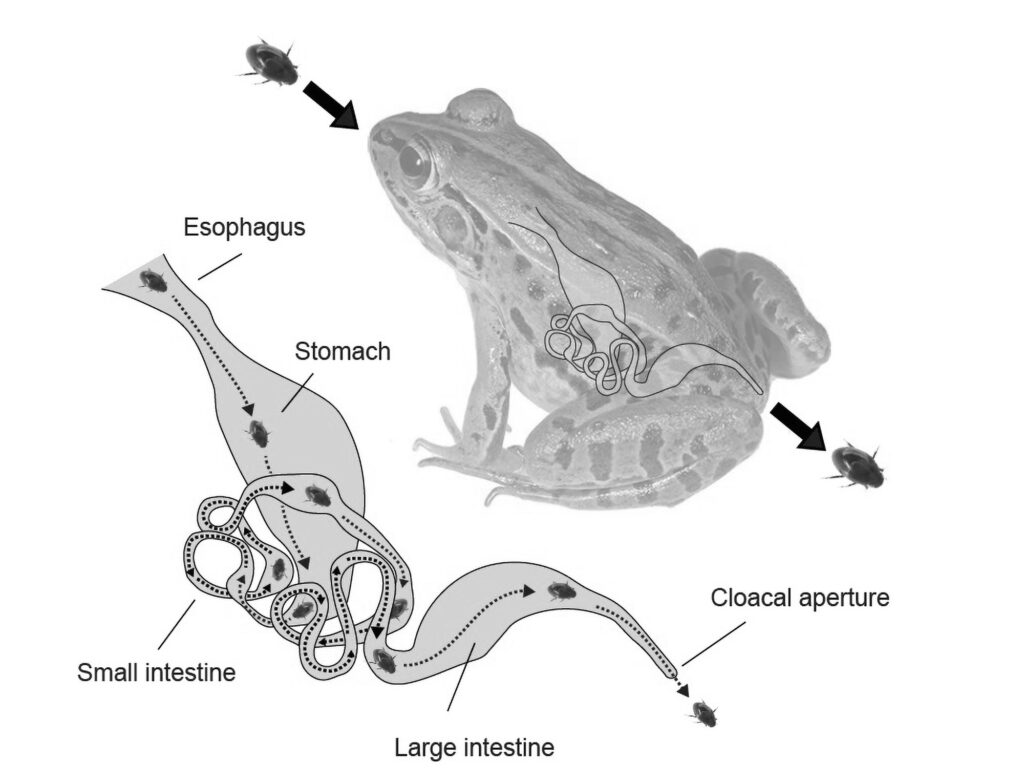
Hypothetical escape route of Regimbartia attenuata through the frog digestive system. The beetle moves toward the frog’ s vent via the digestive system (esophagus, stomach, small intestine, and large intestine) and eventually exits through the cloacal aperture 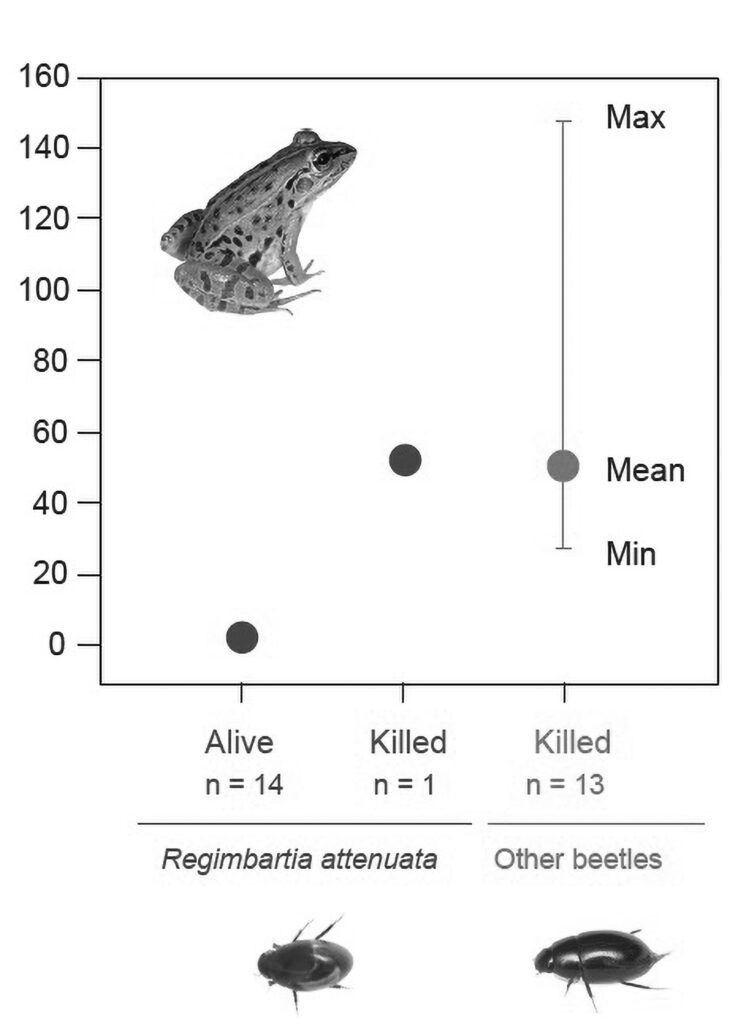
Time required for the passage of Regimbartia attenuata and other beetles through the frog Pelophylax nigromaculatus from swallowing to excretion
The video footage shows the frog swallowing the bug before later defecating it out.
Sugiura said that 94.4 percent of the beetles survived for two weeks after leaving the frog’s anus.
The researcher also used four other species of frogs and registered a success rate of over 60 percent. The other frogs were Pelophylax porosus, Glandirana rugosa, Fejervarya kawamurai, and Hyla japonica.
Sugiura said: “The beetles could be closing their hard forewings to protect themselves from digestive juices, and storing up oxygen inside their closed wings to endure a long period in an environment without oxygen.”
In further experiments, the beetle’s legs were fixed with sticky wax before they were eaten. Those bugs were killed in the frogs’ digestive system and excreted over 24 hours after being eaten.
Sugiura said it is possible that the swallowed beetles use their legs to move through the frog’s digestive tract before being excreted.

The aquatic beetle is about to be swallowed by the frog 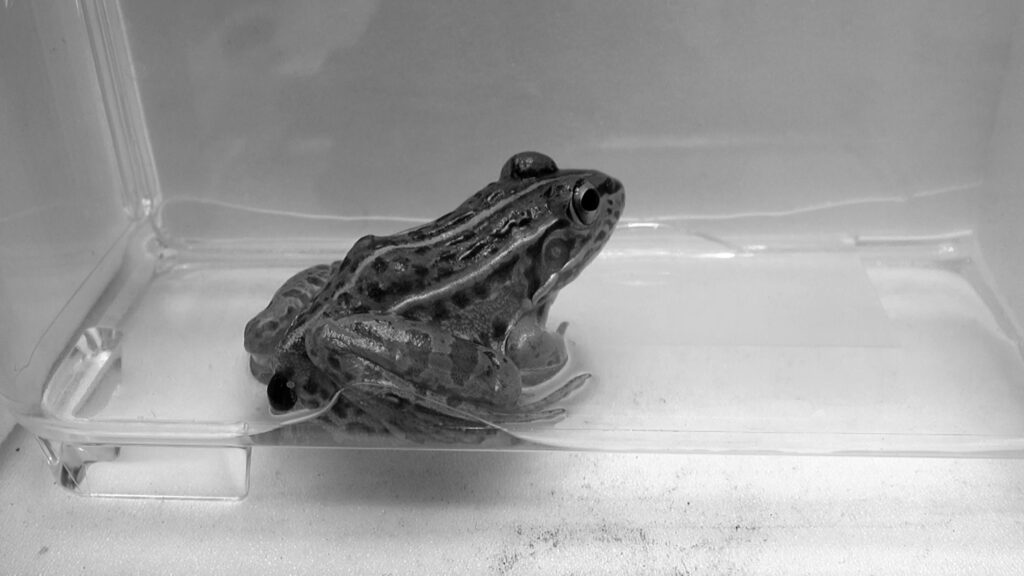
Aquatic beetle (Regimbartia attenuata) actively escapes from the vent of the frog (Pelophylax nigromaculatus) via the digestive system
Shinji Sugiura’s findings were published in the peer-reviewed scientific journal ‘Current Biology’ on 4th August with the title ‘Active escape of prey from predator vent via the digestive tract’.
The study is available to read at: https://doi.org/10.1016/j.cub.2020.06.026.
To find out more about the author, editor or agency that supplied this story – please click below.
Story By: Lee Bullen, Sub-Editor: Alex Cope, Agency: Real Press
The Ananova page is created by and dedicated to professional, independent freelance journalists. It is a place for us to showcase our work. When our news is sold to our media partners, we will include the link here.
To find out more about the author, editor or agency that supplied this story – please click below.
Story By: Lee Bullen, Sub-Editor: Alex Cope, Agency: Real Press
The Ananova page is created by and dedicated to professional, independent freelance journalists. It is a place for us to showcase our work. When our news is sold to our media partners, we will include the link here.

